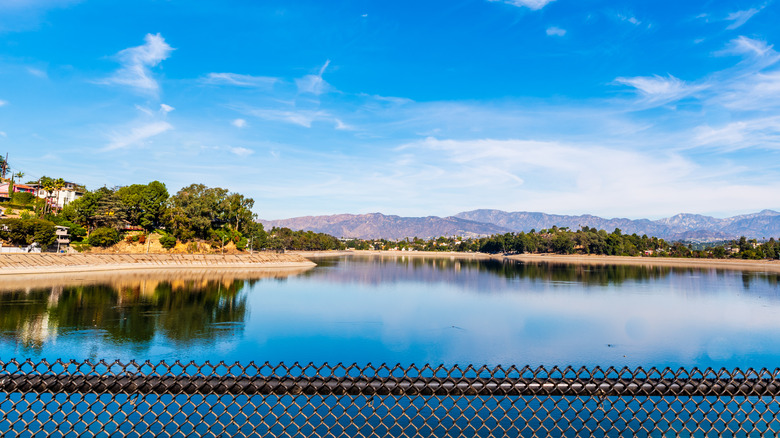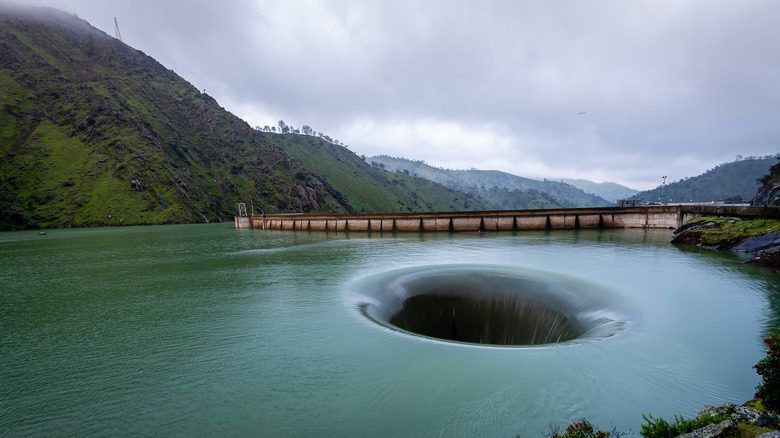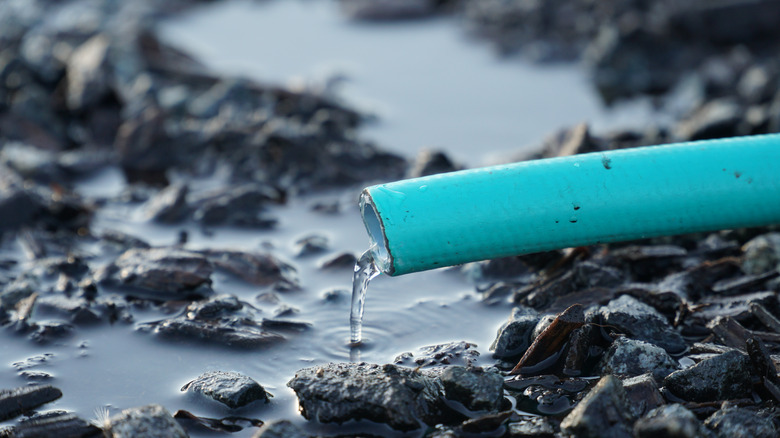These Plastic Balls Are Fixing An Unexpected Problem For California
If you've ever seen a video about reservoirs in California or happened to visit one yourself, you might have caught a glimpse of a layer of black balls floating on the surface. These balls are known as shade balls. They were dumped in two separate reservoirs in California by the Los Angeles Department of Water and Power (LAWPD) first in 2008, and then a couple of years after that in 2015. The balls were made from high-density polyethylene (HDPE), and were semi-filled with water to prevent the wind from blowing them away.
According to Time, the material used to make them is also used to make milk jugs. Sky News reported that the balls cost the municipality around $0.36 — making it a cost-effective way to save the environment. Some people may know them as "bird balls" because they were traditionally used to stop birds from landing in hazardous tailing pools that are found near mining operations. They were also used for safety reasons to stop birds from landing in airport drainage ponds because they might collide with airplanes (via Science Alert). So, what are these black plastic balls doing inside California's water supply? Read on to find out why millions of them have been released.
Why did California chuck millions of balls in a lake?
According to Sky News, Los Angeles was the first city in the United States to use this technology. It deployed 400,00 of these four-inch shade balls in 2008 in the Ivanhoe Reservoir because it was the cheapest way to decrease bromate levels in the water and prevent algae growth (via UPenn). According to PBS, they could have used other, pricier covers for the water but it would have cost them $250 million more.
They repeated the process for the second time in 2015 when they dumped 96 million into a 175-acre reservoir in Los Angeles. According to National Geographic, this reservoir could hold up to 3.3 million gallons of water and had "enough to supply the entire city with enough drinking water for up to three weeks."
Not only did they want the balls to be able to stymie the growth of algae and keep contaminants out, but city officials also deployed these balls to slow down the inevitable water evaporation by up to 90% caused by drought. At the time, California was going through a historic drought. In a time, when the state needed to obtain as much water as it could get, the balls were projected to save up to 300 million gallons of water for the city, which equaled enough drinking water for roughly 8,100 people (via PBS).
Was it effective?
Researchers from several universities including MIT, Imperial College London, and the University of Twente in the Netherlands questioned the sustainability of using these balls to conserve water in a July 2018 journal article. They noted that making shade balls could use more water than what they intended to save. According to their estimates, although the balls could save 1.15 million cubic meters annually, the manufacturing process, which involved using resources such as oil, electricity, and natural gas would take up to 2.9 million cubic meters of water. But, with time these water losses could be offset if this was a "long-term" measure. Shade ball manufacturers have pointed out that their balls should last around 25 years (via National Geographic).
Interestingly, out of the different methods employed by local municipalities to conserve water, the one that worked the best is quite simple. A 2014 study showed that when mandatory water restrictions were implemented in Los Angeles from May to June 2010, the city saved 10 times more than what they were able to conserve with shade balls (via PBS).


